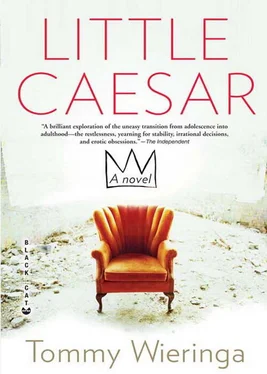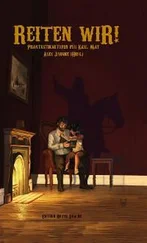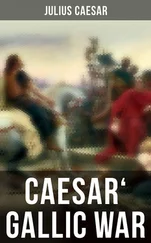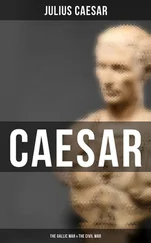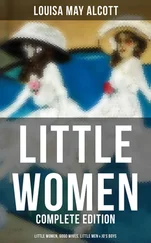I was her makeup doll, she would tell me things from before my memory began. I had the impression that in making her historical sketches she used the eraser more often than the pencil. While she was painting me, my eyes opened to her icons as well: a pen and ink portrait of the Maitreya, a pastel of Jesus of Nazareth, a photograph of Bhagwan torn not entirely intact from a magazine. These were the fixed points in her personal pantheon.
‘They look like him,’ I said.
My geisha face was expressionless.
‘Hmmm?’
‘Those men, they look like him. Like my father.’
Her smile wavered. Mentioning him caused her pain. Physically.
‘No they don’t,’ she said.
‘Yes they do. They all have beards.’
‘But that doesn’t mean. .’
‘And those piercing eyes, like they want something from you.’
She shook her head. I pushed in the knife and twisted it.
‘Why are all of them hanging here on the wall, but there isn’t a picture of him in the whole house?’
‘Stop it, Ludwig. Those are examples to me. . universal teachers. . inspiration. Call it whatever you like. But it doesn’t have anything to do with your father.’
I pointed at the statue of them mating.
‘They look like him,’ I said.
‘I don’t know what’s got into you today, but I want you to stop right now.’
But I didn’t stop. There was a pleasant sort of wakefulness in my head, something related to hunger. What can be seen, will be seen.
We lived at the edge of the world and could fall off at any moment. We knew that when we moved in. That the house was a risk. That although Warren was building a line of defense, there were unknown factors. Our preservation depended on the pace at which the wall progressed, the quantity of material he could obtain. We didn’t know that in the month before we arrived five meters of the hillside had been lost. Warren did the best he could, we never doubted his trust-worthiness.
‘Put everything inside,’ he said once during our first winter there. ‘Make sure everything’s battened down. Seriously.’
From my bedroom window on the first floor I saw it coming. First the gusts of wind. The playful nudges. I heard it crack. In the sky above the sea psychedelic colors flowed together, bursts of rain lashed our house. I saw sulfurous skies, then watched as everything turned green , the green of sunglasses — the sky had fallen on its side, the rain was coming in horizontally. Clouds of dark blue ink curled in on themselves, like an animal writhing in pain. The storm came closer, the light was sucked out of the world in a vortex.
‘Ludwig!’ my mother shouted from downstairs. ‘Stay away from the windows! Don’t get close to the windows, that’s what Warren said.’
The wind grew stronger, I remember my amazement at the power of something that was invisible.
The storm lasted a day and a night. Its voice made our ears ring. Everything shook beneath the pounding drumbeats. We lit a fire in the hearth but the smoke came back through the flue. We had put some things in the shed and fastened down others, but we had thought too much about the word storm and too little about a sky that was turned against us. The roof of the pantry was lifted and ripped off, we found it later in the bushes. The house felt like it was being torn from its foundations. Everything clattered and whistled. My mother went outside with a flashlight to fasten a shutter. She came back inside in a frenzy.
‘The wind,’ she panted. ‘So strong. Can’t breathe.’
We sat up for part of the night, wrapped in blankets, and finally fell asleep in the living room. We knew: when we awoke, the sea would have come even closer.
Looking out the window in the half-light of morning, I saw the dark figure of a man out there. His coattails were flapping. I pulled on my boots. The wind knocked the air out of my lungs. Along the path between the thorn bushes I walked to the cliff’s edge, where Warren was leaning into the wind.
‘Here. .’ he shouted. ‘And there.’
A huge breach had been knocked out of the seawall further up. Under our feet the waves were washing up all the way to the cliff. His hand on my shoulder, don’t get too close, boy . The cliff could have been undermined, it could collapse, we would drown in the foaming sea. We looked at the ragged edge, and I saw Warren’s concern. A new boundary had been cut out. I tried to stand beside him like a man sharing his concern, I knitted my brows and let earnestness take possession of my body.
When we bought the house, Warren had said that by the next winter his wall would extend all the way in front our house — he hadn’t made it, not by a long shot. We saw his struggle, the great effort; my mother didn’t want to remind him of his promise already, not now. Besides, there was no use. It was painful. He was doing his utmost.
During the storm flood of 1953, Alburgh had been almost entirely surrounded by the sea. Six people drowned. At Dwight Busby’s café you could see how high the water rose: on the wall, Busby had painted little waves at the height of a man’s shoulder. A storm surge of that caliber was rare. The North Sea was a shallow bowl, the water flowed into it from the north and back out again through the Strait of Calais. During that storm the wind had pushed more water into the bowl than it could take, ebb and flow were disturbed, the water from one high tide had not yet disappeared before the next came rolling in. The tides piled up: the volume of water in the bowl had now doubled. And all that pent-up energy exploded against the coast — the cliff was eaten away at from below and ultimately collapsed.
During our first winter at Kings Ness, a great deal of land was lost as well. There was not enough filling material coming in, the work sometimes stopped altogether. When it started again, sounds of protest were heard from Alburgh about the trucks driving up and down the cobble-stone streets. A letter to the editor of the Alburgh Chronicle , grumbling among the citizens. They felt sympathy for Mr. Feldman’s War , but the village wasn’t built for such heavy transport, its rustic charm was being violated, people came here for the quiet and natural beauty.
On one occasion the work on the soft seawall was halted for six months. Chemical waste had been found amid the debris. The contaminated section was dug away, and since then Warren had kept careful track of what was dumped where, so that polluted ground could be traced back to a source. Warren had a shipment of concrete WWII tank traps placed at the bottom of the cliff, in front of our house. This served to slow the erosion somewhat. We started looking at the sea differently. Its aesthetic and recreational functions began waning in importance. Before us lay an element that was out to destroy us; we interpreted its indifferent destructiveness as an act of aggression.
Warren Feldman wasn’t the first person to try and safeguard the coastline, and he wouldn’t be the last. It was inevitable that large parts of East Anglia would one day be under water again. People would continue to struggle against that, just as the inhabitants of the lost town of Castrum had once thrown up walls of mud and twigs against the tide.
Sometimes, drawn by the romanticism of that drowned city, tourists came to look from our garden. You had to have a good imagination, for there was nothing to see. Looking east from Kings Ness, out over the sea, you looked out across the empty space where the town had once been. From the murky waters, divers sometimes brought up chunks of church wall and coping stones; it was this marine archeology that told us what Castrum may once have looked like. Spread across the sea floor were the remains of at least eight churches, four abbeys, two hospices and an unknown number of chapels — where crabs and fish now lived, as well as sponges, lobsters and the occasional eel.
Читать дальше
